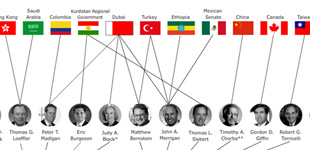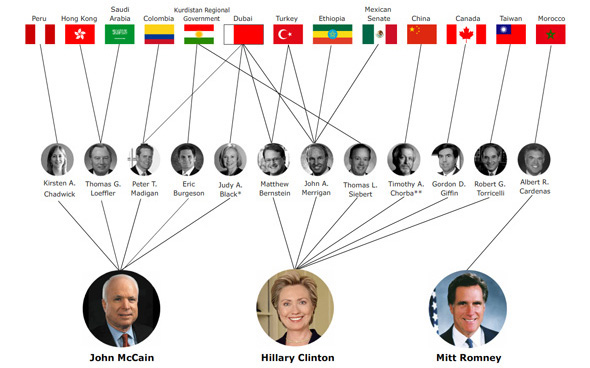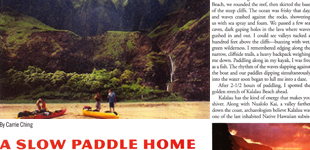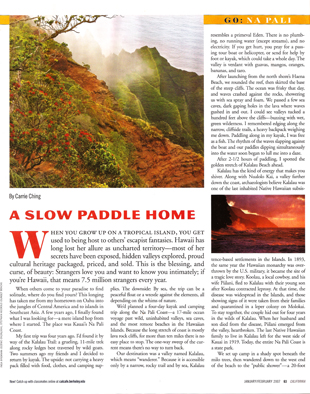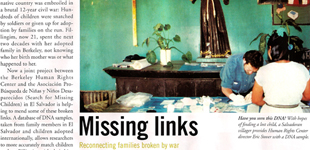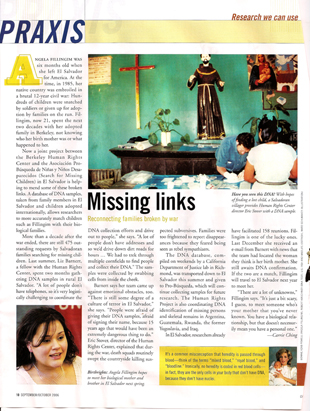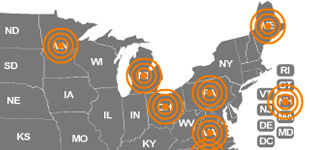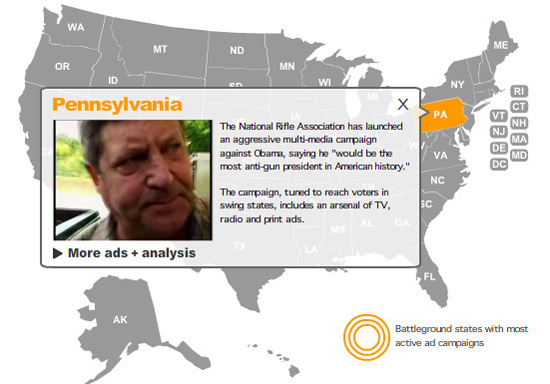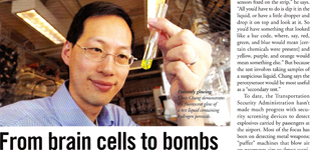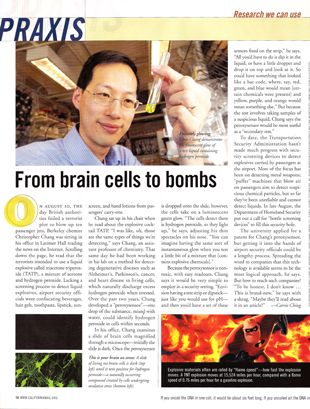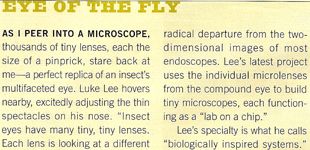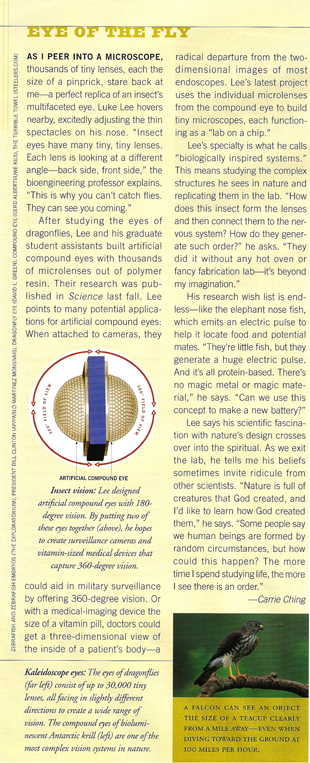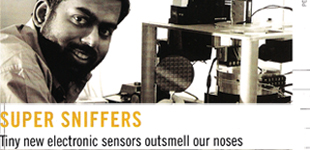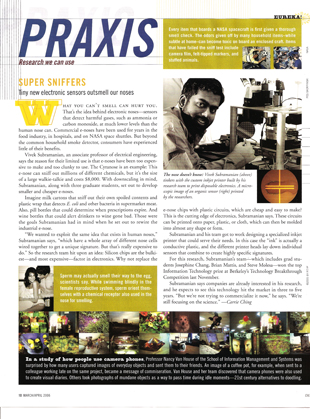The Price of Sex
This multimedia project showcases the work of photojournalist Mimi Chakarova. After the collapse of communism in 1989, millions of former Soviet bloc residents migrated abroad, breathing life into one of the oldest criminal enterprises—the trafficking of humans into sexual slavery. Since then, thousands of Eastern European women have been sold into prostitution. Mimi has been documenting this phenomenon for the past seven years. I worked closely with her to create a multimedia presentation using her photography and video interviews she collected of sex trafficking survivors. I edited all of the videos, produced the multimedia map, and managed production of the website—from conception and design through content development, construction, and launch.
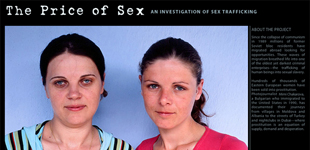
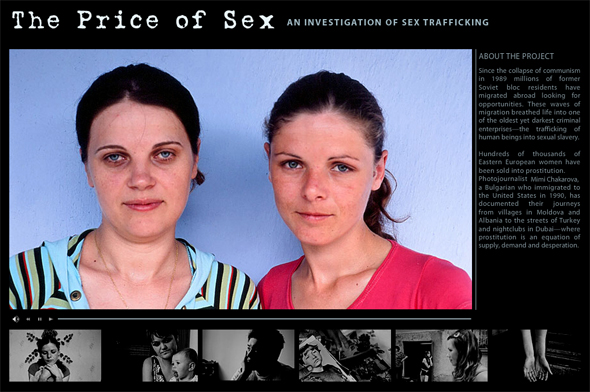
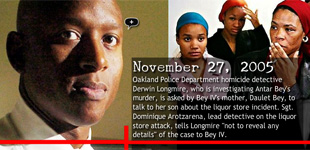
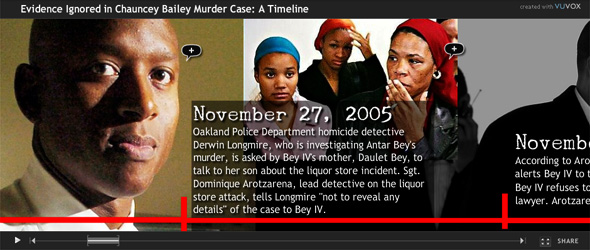 I designed this interactive timeline for The Chauncey Bailey Project using Vuvox.com. It accompanied an Oakland Tribune story reporting that Sgt. Derwin Longmire, the lead detective assigned to investigate journalist Chauncey Bailey’s 2007 shooting, had many ties to Your Black Muslim Bakery—and several members of the bakery were suspects in Bailey’s murder. Reporters discovered Longmire had been presented with evidence that Yusuf Bey IV, the bakery CEO, was likely involved in the murder, but the detective failed to document that evidence in the case file. This timeline tracked Longmire’s many connections to the Bey family.
I designed this interactive timeline for The Chauncey Bailey Project using Vuvox.com. It accompanied an Oakland Tribune story reporting that Sgt. Derwin Longmire, the lead detective assigned to investigate journalist Chauncey Bailey’s 2007 shooting, had many ties to Your Black Muslim Bakery—and several members of the bakery were suspects in Bailey’s murder. Reporters discovered Longmire had been presented with evidence that Yusuf Bey IV, the bakery CEO, was likely involved in the murder, but the detective failed to document that evidence in the case file. This timeline tracked Longmire’s many connections to the Bey family.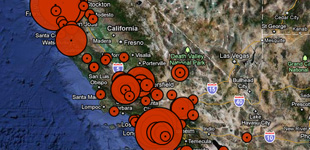
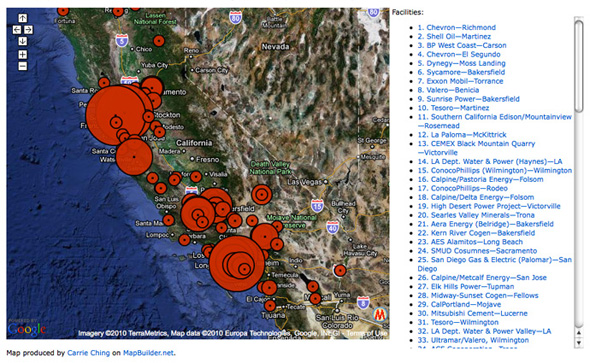 This map, produced for California Watch, shows the top 100 carbon dioxide-producing facilities in the state, according to data released by the California Air Resources Board. Power plants and oil refineries appear to be the largest culprits. I researched and mapped the individual facilities on a Google satellite image using Mapbuilder.net. I designed custom markers to visually show the amount of carbon dioxide emissions from each facility, and calculated conversions to demonstrate the scale and impact of those emissions.
This map, produced for California Watch, shows the top 100 carbon dioxide-producing facilities in the state, according to data released by the California Air Resources Board. Power plants and oil refineries appear to be the largest culprits. I researched and mapped the individual facilities on a Google satellite image using Mapbuilder.net. I designed custom markers to visually show the amount of carbon dioxide emissions from each facility, and calculated conversions to demonstrate the scale and impact of those emissions.